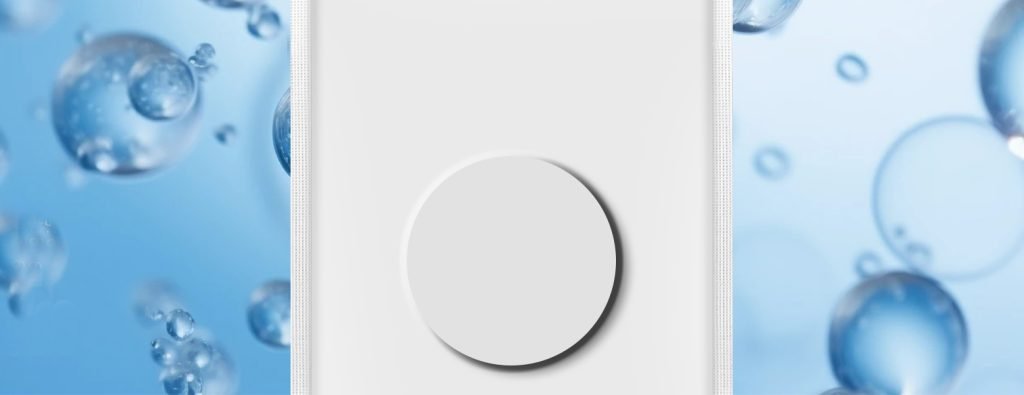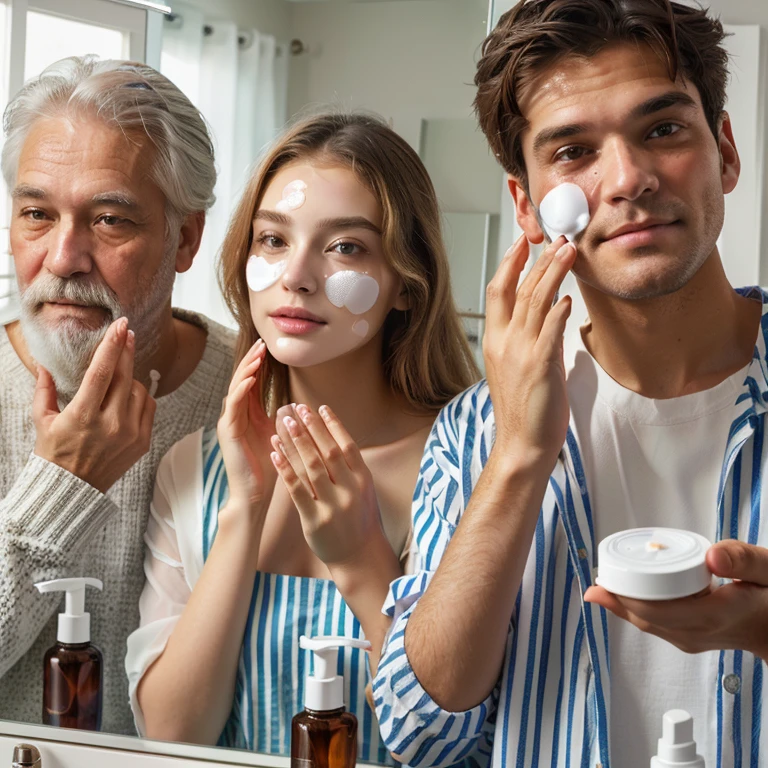How Do Cysts Come Into Being?
Understanding the Formation of Cystic Acne
When oil glands produce excess sebum, it combines with dead skin cells, blocking the pores. This environment is ideal for bacteria to thrive, particularly Propionibacterium acnes, which is commonly found on the skin. The presence of bacteria leads to an immune response, causing inflammation and the formation of pus-filled lumps deep within the skin. These cysts are significantly more severe and persistent than standard pimples due to their depth and the body’s aggressive inflammatory response.
What Contribute to the Formation of Cysts?
Hormonal fluctuations, particularly increased androgen levels, often trigger excessive sebum production. This can combine with skin bacteria and dead cells to clog pores, setting the stage for cystic acne.
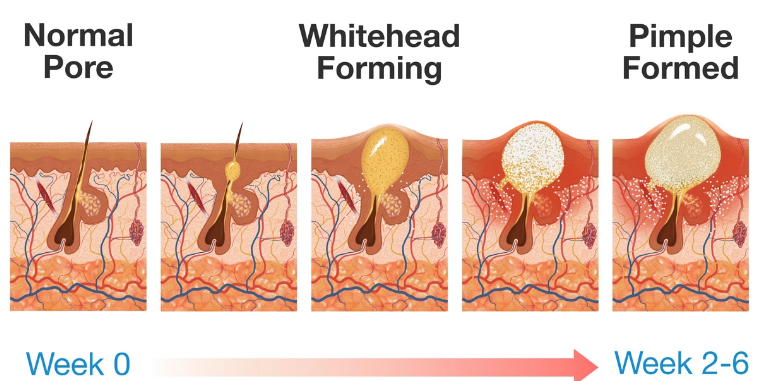
How do cysts come into formation
What Are Pimple Patches and How Do They Work?
What Are Pimple Patches?
Pimple patches are small, adhesive treatments that stick directly onto blemishes. They typically contain hydrocolloid, a moisture-absorbing agent that helps extract impurities and protect the area from bacteria and irritants. Some of them contain active ingredients such as anti-inflammatory medications, which can speed-up the healing process, as proved by an aritcle from the International Journal Applied Pharmaceutics.
How Do Pimple Patches Heal Cysts?
When applied to a pimple, the hydrocolloid in the patch draws out pus and fluid, reducing inflammation and speeding up healing. The patch also creates a moist environment, which is ideal for wound healing, preventing scarring and minimizing redness.
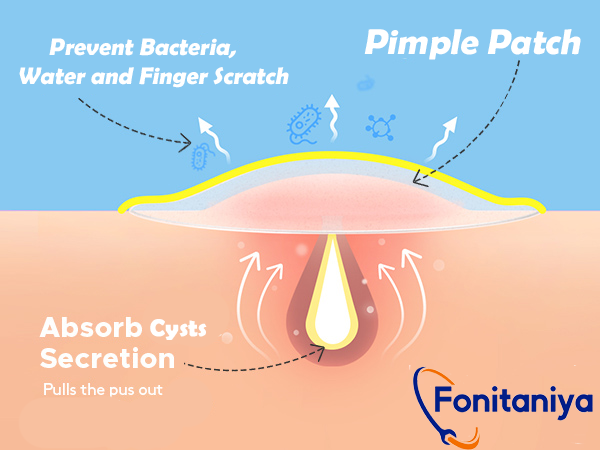
The mechanism of healing with pimple patches
Can Pimple Patches Be Effective on Cystic Acne?
The simple answer is yes, and no. Whether pimple patches can work on cystic acne depends on the type of cysts. Cystic acne’s depth and inflammation level may limit the patch’s ability to draw out pus effectively. Studies and dermatologists suggest that while hydrocolloid patches can reduce surface inflammation, they are not always effective against the deeper cysts typical of cystic acne without additional treatments like medication.
What Types of Acne Do Pimple Patches Treat Best?
When Should You Use Pimple Patches?
Pimple patches are most effective on acne that is closer to the surface of the skin, such as whiteheads. These are filled with pus and are prime targets for the absorbing action of hydrocolloid patches.
Pimple Patches Couldn’t Do Much for Deep Cysts
For acne types like blackheads or deeper skin cysts, pimple patches might not offer the same results. An 2023 study published on Medicine Advances confirmed this fact. Because deep acnes do not provide the type of environment due to their positioning or lack of pus-like material, pimple patches are not able to provide support for their healings. In this case, one should seek dermatological treatment.
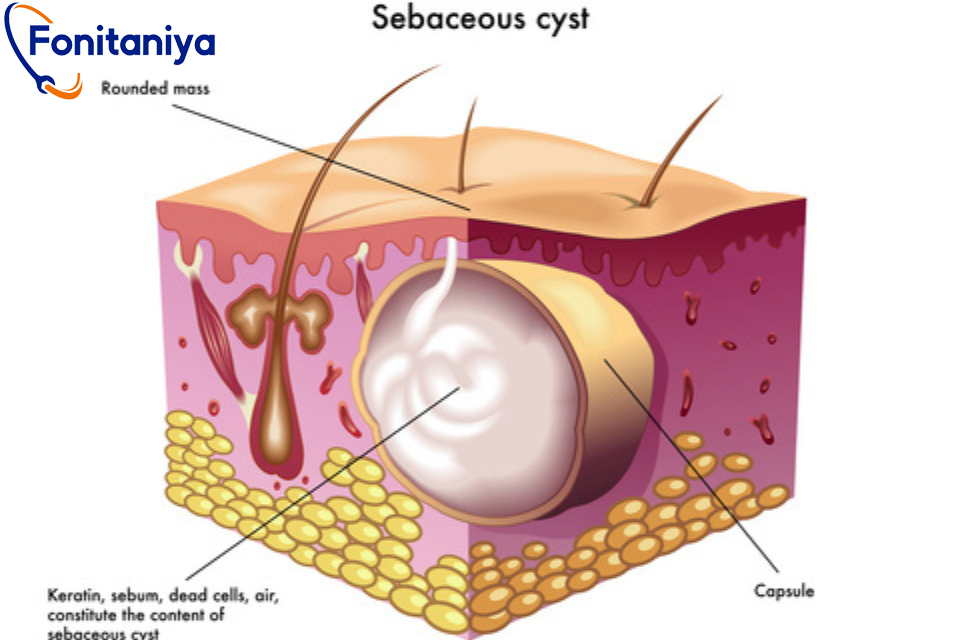
Pimple patches often fail to work on deep cysts
How Should You Use Pimple Patches on Cystic Acne?
How to Apply Pimple Patches Effectively?
Ideally, you should apply the patch when the cyst is visibly inflamed and starting to form a head. This is when the cyst is most susceptible to treatment, as the patch can better adhere and draw out the pus, reducing inflammation and swelling.
The first thing is to apply the patch on for the right duration. Typically, you should leave it on for at least six to eight hours, or overnight, to allow the hydrocolloid material to absorb pus and fluids fully. This duration helps ensure that the patch has enough time to work effectively on the acne.
After removing the patch, it’s important to follow a gentle skin care routine to optimize healing. Cleanse the area with a mild cleanser to remove any residue or bacteria. Follow up with a light, non-comedogenic moisturizer to keep the skin hydrated. Avoid applying any harsh skincare products or makeup directly on the affected area to prevent irritation and allow the skin to heal. These steps will help maintain the benefits of the pimple patch and promote a faster recovery.
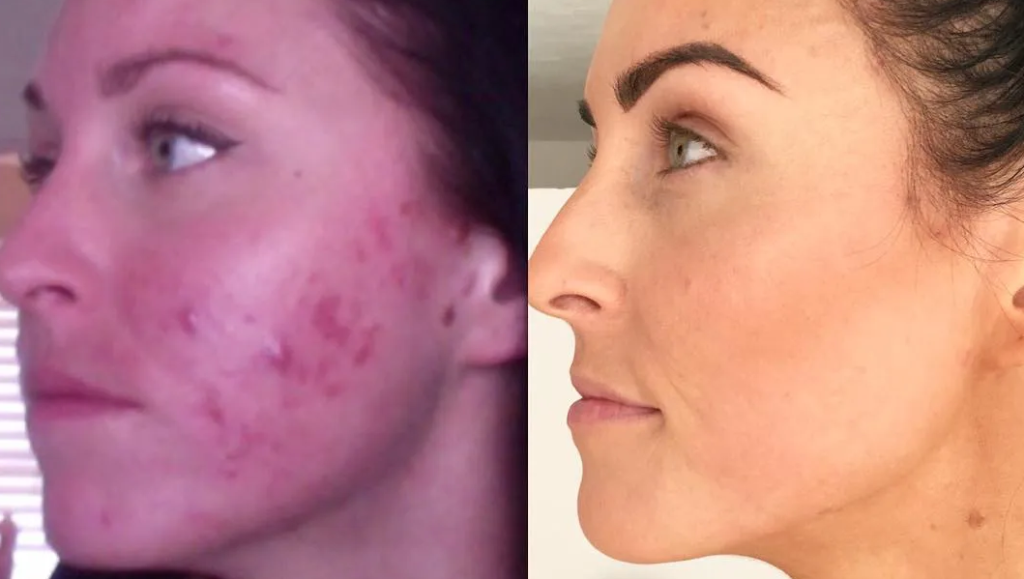
Proper usage of pimple patch can effectively heal cystic acne
Combining Pimple Patches with Other Treatments
Since cystic acne is deeper, pimple patches may be more effective when used in conjunction with other treatments like topical or oral medications prescribed by a dermatologist. This combination can help tackle the deeper layers of the cyst while the patch manages surface symptoms.
What Alternatives Exist for Treating Cystic Acne?
Medicinal Treatments
For more severe cases of cystic acne, dermatologists often tailor treatments based on both the severity and persistence of acne. Oral antibiotics are commonly prescribed to reduce bacteria and fight inflammation. Hormone therapy, including birth control pills or anti-androgens like spironolactone, is effective particularly if the acne is believed to be hormonally driven.
Isotretinoin, a powerful derivative of vitamin A, is another option for stubborn cystic acne. This treatment is typically reserved for the most severe cases due to its potential for significant side effects and is used when other treatments have failed. It works by dramatically reducing the size of the skin’s oil glands and, consequently, the amount of oil production, clearing the skin over time and preventing severe acne from returning.
Natural and Home Remedies
Options like tea tree oil, witch hazel, and aloe vera can complement medical treatments by reducing inflammation and promoting healing, though they may not be sufficient alone for severe cystic acne.
Are There Any Risks or Side Effects of Using Pimple Patches on Cystic Acne?
Are Pimple Patches Irritative?
While generally safe, pimple patches can sometimes cause skin irritation, especially if worn too long or on sensitive skin. Monitor the skin’s response when you use a pimple patches and remove them if irritation occurs.
Limitations in Efficacy
Pimple patches may not fully resolve deeper cystic acne alone and might delay seeking more effective treatments, potentially worsening the condition if relied upon exclusively.
Conclusion
In conclusion, pimple patches represent a versatile and effective solution for managing acne, particularly when dealing with surface-level blemishes like whiteheads.
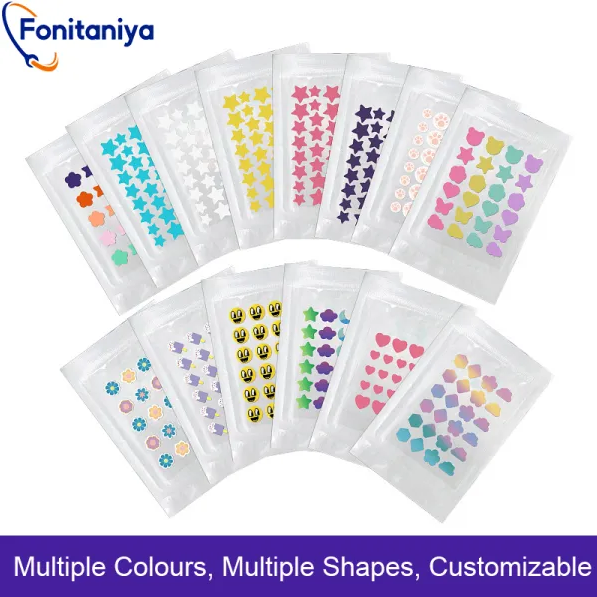
Our own DIY pimple patches
Our brand, Fonitaniya, not only produces high-quality pimple patches but also specializes in DIY pimple patches/customized hydrocolloid patches tailored to meet diverse customer needs. With over 13 years of experience in producing tapes and other adhesive products in a B2B framework, Fonitaniya keep innovating in better quality, ensuring our products stand out in the skincare market. Whether you’re looking for standard solutions or bespoke products, Fonitaniya offers reliable and effective skincare enhancements for every need.
FAQs
How do pimple patches work?
Pimple patches, often made with hydrocolloid material, absorb pus and oil from pimples, protecting the area while reducing inflammation and speeding up healing.
Do pimple patches work on all types of pimples?
Pimple patches work best on pimples with a visible head (whiteheads). They are less effective on blackheads and deep cystic acne.
What do pimple patches actually do?
Pimple patches help to extract impurities, keep the area clean, and create a moist environment that promotes faster healing.
How long should you leave a pimple patch on?
It’s best to leave a pimple patch on for at least 6 hours or overnight to allow it to absorb pus and reduce the pimple effectively.
What should you do after removing a pimple patch?
After removing a pimple patch, gently clean the area and apply a non-comedogenic moisturizer to keep the skin hydrated.
What is hydrocolloid, and how is it used in pimple patches?
Hydrocolloid is a moisture-retentive dressing material that helps to absorb fluid and protect wounds. In pimple patches, it draws out pus and fluids from pimples to aid healing.
How do pimples form?
Pimples form when the pores of the skin get clogged with oil, dead skin cells, and bacteria, leading to inflammation.
What are hydrocolloid bandages, and how do they differ from pimple patches?
Hydrocolloid bandages are used to treat larger wound areas by absorbing exudate and promoting healing, similar to how pimple patches work on pimples.
What is inside of a pimple?
A pimple typically contains a mix of sebum (oil), bacteria, dead skin cells, and immune cells that form pus as a result of the body’s inflammatory response to clogged pores.
Do hydrocolloid patches work for cysts?
Hydrocolloid patches are less effective on cysts as these are deeper skin infections. They work best on surface-level inflammations like pimples with a head.


